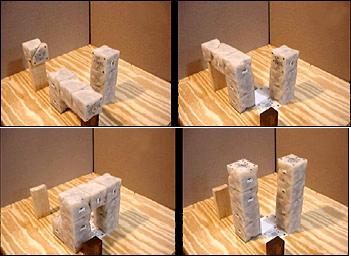American researchers have succeeded in building a simple robot that can build copies of itself from spare parts.

American researchers have succeeded in building a simple robot that can build copies of itself from spare parts.
In an article published in the journal Nature, the creators of the robot write that the experiment showed that the ability to reproduce is not unique to biology.
In the long term, the scientists plan to design a robot that will contain hundreds or even thousands of identical basic components. This will allow the robots to repair themselves if one of the components breaks down as well as to redesign themselves to better perform the task they were required to perform or even produce additional assistants.
So far, the robot, if you can call it that, contains only 3-4 mobile cubes. Each unit carries a small computer code that carries the template for building a robot, as well as electrical contacts that allow it to communicate with its neighbors and manage their connection process.
By turning and moving, the cubes can pick up new units, decide where they belong and string them together to form a new device. In just over a minute, a simple three-cube robot produced a replica of itself.
The copy can also produce additional copies. Right now it's just a toy demonstration of an idea, but researcher Hood Lipson of Cornell University in Ithaca, New York, envisions a bright future for the modular intelligent machines.
"Space applications come to mind. If you send a robot to one of Jupiter's moons and the robot breaks down, the mission is over," says Lipson. "Therefore, you need a robotic system with the ability to adapt and the ability to repair itself remotely. As mentioned, this is one promising implementation option." Other applications can be in the depths of mines or in nuclear facilities. Researchers have previously used aspects of evolution to help them design robots. Combining these aspects together with the biology of self-repair and the ability to replicate can cause huge changes in the field of robotics.
